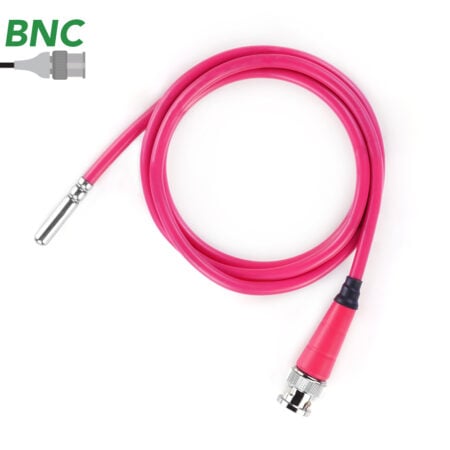Subtotal: $169.99

10 Sensors For Greenhouse Monitoring – A Guide To Precision Agriculture
Greenhouse monitoring is the backbone of precision agriculture, and it starts with the right sensors. The 10 most essential sensors to optimize crop health and
Product Categories

Small-scale mushroom farming is the practice of growing mushrooms on a small plot of land, usually in a controlled indoor environment, also known as a grow room. Mushrooms are grown for various purposes, including personal consumption or as a small business venture.
Are you looking for a new hobby that is also productive? Maybe you have a small plot of land that you want to utilize in a unique way. Why not try mushroom farming? Small-scale mushroom farming is a fun and rewarding activity that can provide you with fresh and delicious mushrooms for your own consumption, or even as a source of income.
Mushroom farming has become a popular trend in recent years, with more and more people taking up the hobby of growing their own mushrooms. Not only is it a fun and rewarding activity, but it can also be a lucrative business venture.
In this ultimate guide to small-scale mushroom farming, we’ll cover everything you need to know to get started from what small-scale farming is to the environmental conditions that mushrooms need to thrive in.
Small-scale mushroom farming is the practice of cultivating mushrooms on a small scale, typically for personal consumption or local sales. This type of farming is becoming increasingly popular due to the growing interest in sustainable and locally sourced food. Mushroom farming is a unique form of agriculture that requires specific growing conditions and techniques.

Mushrooms are grown in a controlled environment, typically in a dark and humid space, similar to growing cannabis. The growing medium for mushrooms can vary, but common options include straw or soil compost. The process of growing mushrooms involves inoculating the growing medium with mushroom spores, which will eventually develop into fruiting bodies or mushrooms.
Small-scale mushroom farming is an excellent option for those looking to start a small business or supplement their income. It requires minimal space and resources, making it an accessible option for both urban and rural areas. Additionally, mushrooms have a high demand and can fetch a premium price, making it a potentially profitable journey.
However, mushroom farming can be challenging and requires specific knowledge and skills. The process of cultivating mushrooms is delicate and requires careful monitoring and attention to detail. Additionally, growing conditions must be maintained at a specific temperature and humidity level to ensure optimal growth.
Before deciding to start a small-scale mushroom farm, it’s important to weigh the pros and cons. One of the main advantages of mushroom farming is that it’s a low-maintenance activity that requires minimal space and resources. Mushrooms are also highly nutritious and can be grown year-round. Additionally, mushroom farming has a relatively low start-up cost compared to other agricultural industries.
However, there are also some drawbacks to consider.
Mushroom farming requires a significant amount of attention to detail, as any changes in the environment can affect the growth and quality of the mushrooms. The process can also be labor-intensive, especially during the initial set-up and harvest periods. Additionally, there is a risk of contamination if the grow room is not properly sterilized or if the mushrooms are not handled correctly.
The equipment to grow mushrooms can vary depending on the size and scale of your operation, but there are a few key pieces of equipment that are essential for any small-scale mushroom farmer.
Firstly, you will need a chosen substrate to grow your mushrooms on. Common substrates include straw, sawdust, and coffee grounds. You will also need a way to sterilize your substrate, which can be done using a pressure cooker or steam sterilizer. Once your substrate is sterilized, you will need to inoculate it with mushroom spores or spawn.
Next, you will need a growing container to hold your substrate, which is another important component for mushroom farming. This can be anything from plastic bags to plastic trays or even wooden boxes. The container should be able to hold the substrate and allow for proper ventilation and drainage. You’ll also need a grow room, which can be a small enclosed space in your home or a dedicated outbuilding. The grow room should have proper ventilation and lighting, as well as a temperature and humidity control system.
The best way to monitor the temperature and humidity levels inside your grow room is by using a thermometer and hygrometer. If the temperature or humidity levels are too low or too high, it can negatively impact the growth of your mushrooms.
Finally, you will need to harvest your mushrooms using a sharp knife or scissors. You will also need a way to store your harvested mushrooms, which can be done using plastic bags or containers.
Understanding the necessary nutrients for mushrooms to grow is vital. Mushrooms are a unique crop that requires a specific set of nutrients to thrive. The primary nutrients that mushrooms need to grow are nitrogen, phosphorus, and potassium. These macronutrients are essential for the growth and development of the fruiting body, which is the part of the mushroom that we eat.
In addition to the primary nutrients, mushrooms also require a range of micronutrients to develop properly. These include calcium, magnesium, iron, and zinc. These micronutrients play a crucial role in the development of the mycelium, which is the vegetative part of the mushroom that grows underground. Without these micronutrients, the mycelium will not develop correctly, and the fruiting body will not form properly.
It’s worth noting that different mushroom varieties have slightly different nutrient requirements. For example, oyster mushrooms require high levels of nitrogen, while shiitake mushrooms prefer a more balanced nutrient profile. In general, though, ensuring that your growing medium has the right balance of macronutrients and micronutrients, as well as the correct pH, will give your mushrooms the best chance of success.
In order to successfully cultivate mushrooms, it is crucial to maintain the right pH level for optimal growth.
Mushrooms thrive in a slightly acidic environment, with a pH ranging from 6.5 to 7.5. This means that the soil or growing medium should be slightly acidic, and not too alkaline. If the pH level is too high, it can lead to stunted growth, poor yield, and even the development of harmful bacteria or fungi. Therefore, it is important for you as a mushroom farmer, to regularly monitor the pH level of your growing medium, and make adjustments as needed to ensure healthy and robust mushroom growth.
Before you can start planting your mushrooms, you’ll need to prepare the substrate and spores. It’s essential to ensure that the substrate is properly sterilized to prevent contamination. As mentioned, this is easily done by boiling or steaming the substrate, or using a pressure cooker.
After the substrate has been sterilized, you can add the spores or spawn. The spores can be purchased online or from a local supplier. You’ll need to mix the spores with the substrate and then place the mixture in a container. The container should be sealed to prevent contamination and placed in the grow room.
To ensure that your mushrooms grow properly, you’ll need to monitor and control the environment closely in the grow room. This includes maintaining the proper temperature and humidity levels, as well as providing adequate lighting. You can use a humidifier and a thermometer to regulate the environment.
You’ll also need to ensure that the grow room is properly ventilated to prevent the growth of mold and bacteria. This can be done by installing a fan or air filtration system. Additionally, you’ll need to keep the grow room clean and free of debris.
After the substrate and spores have been prepared and the grow room is set up, it’s time to plant the mushrooms! You’ll need to make small holes in the substrate and add a small number of spores to each hole. The container should be sealed and placed back in the grow room.
Over time, the spores will grow into mycelium, which is the vegetative part of the mushroom. Once the mycelium has fully colonized the substrate, the mushrooms will start to form. This process usually takes around 2-3 weeks.
When the mushrooms are ready for harvest, they should be carefully picked by hand to avoid damaging the mycelium. You can use a sharp knife or scissors to cut the mushrooms at the base of the stem. It’s important to harvest the mushrooms before they become too mature, as they will start to drop spores and lose flavor.
After harvesting, the mushrooms can be stored in the refrigerator for up to a week. You can also dry the mushrooms by hanging them upside down in a well-ventilated area. Dried mushrooms can be stored in an airtight container for several months.
Lighting is a crucial component of mushroom farming as it plays a significant role in the growth and development of the mushrooms. The type, intensity, and duration of light exposure can have a significant impact on the quality and quantity of the mushrooms produced.
When it comes to lighting for mushrooms, it is essential to understand that they require different lighting conditions during different stages of growth. During the initial phase, the mushrooms require darkness to develop. This is because they grow in the dark and require high humidity levels. At this stage, they require minimal light exposure, preferably less than 5 watts per square foot.
As the mushrooms mature, they require more light exposure to develop properly. This is because they need light to stimulate the production of vitamin D, which is essential for their growth. Natural light is the best source of light for mushrooms, but it is not always available. In such cases, you can use artificial lighting sources such as fluorescent, LED, or incandescent bulbs. The recommended light intensity for mushroom growth is between 500 to 1000 lux, and the light should be on for 8-12 hours per day.
It is also crucial to note that the intensity and duration of light exposure should vary depending on the type of mushroom species being farmed. For instance, some mushrooms require more light exposure than others to develop properly. Additionally, the temperature and humidity levels in the mushroom growing area can also affect the lighting requirements.
Another critical factor that can impact the success of your mushroom farm is the level of carbon dioxide (CO2) in your growing environment.
Too much or too little CO2 can have detrimental effects on your mushroom’s growth.
To grow mushrooms successfully, you need to maintain a CO2 level between 800 and 1200 parts per million (ppm). This range is ideal for the growth of most mushroom species. If the CO2 level is too low, your mushrooms may grow slowly, and the yield may be minimal. Conversely, if the CO2 level is too high, your mushrooms may grow too quickly, resulting in poor-quality fruiting bodies.
There are several ways to maintain the correct CO2 level to grow mushrooms. One effective method is to use a CO2 sensor to measure the CO2 levels in your growing environment. This device can help you adjust the ventilation system to maintain the ideal CO2 range. Alternatively, you can use a CO2 generator to supplement the CO2 levels in your growing environment. This method involves adding CO2 to the air using a generator, which can help you maintain a consistent CO2 level.

In addition to maintaining the correct CO2 level, it’s essential to monitor the temperature and humidity levels in your growing environment. By maintaining these environmental factors, you can ensure that your mushrooms grow healthy and strong, resulting in a bountiful harvest.
The correct temperature for mushrooms can vary depending on the type of mushroom you are growing. However, most mushrooms thrive in temperatures ranging between 55 and 70 degrees Fahrenheit.
If the temperature is too low, the mushrooms will not grow, and if it is too high, they will not develop correctly. The temperature for mushrooms should remain consistent during the growing period to ensure optimal growth. The ideal temperature range can vary depending on the specific stage of growth. For example, during the spawn run stage, the temperature should be between 70 and 75 degrees Fahrenheit. During the fruiting stage, the temperature should be between 60 and 65 degrees Fahrenheit.
It’s also essential to note that the temperature needs to be regulated throughout the day and night. Mushroom farming requires that the temperature remains constant, and fluctuations can hinder the growth of the mushrooms. Proper ventilation and insulation can help maintain the correct temperature levels for growing mushrooms.
To grow mushrooms successfully, you need to understand the importance of humidity levels in the growth process. The right humidity level is critical for the growth of mushrooms, and it is essential to maintain the correct conditions to ensure optimal yields.
The ideal humidity level for growing mushrooms is between 80-90%. This range is necessary to keep the growing environment moist and prevent the mushrooms from drying out. If the humidity levels are too low, the mushrooms will not grow correctly and will become stunted. On the other hand, if the humidity levels are too high, the mushrooms will become too moist, leading to bacterial growth, which can destroy the entire crop.
To maintain the correct humidity levels for growing mushrooms, it is essential to keep the growing area well-ventilated. Proper air circulation will help to regulate the humidity levels and prevent the growth of harmful bacteria. Additionally, the use of a humidifier or misting system can help to maintain the correct humidity levels in the growing area.
It is also essential to monitor the humidity levels regularly to ensure that they remain within the ideal range. A hygrometer (humidity sensor) is a useful tool for monitoring humidity levels in mushroom farming. This device can be used to measure the relative humidity of the air in the growing area and help to adjust the humidity levels as needed.
One of the benefits of small-scale mushroom farming is that it has a relatively low start-up cost compared to other agricultural ventures. However, there are still some expenses to consider. The cost of setting up a grow room can vary depending on the size and complexity of the system. You’ll also need to purchase substrate, spores, and any necessary equipment, such as a humidifier or thermometer.
It’s important to keep in mind that mushroom farming is not a get-rich-quick scheme. It can take several months before you start seeing a return on your investment. However, with patience and dedication, it can be a rewarding and profitable venture.
Before starting your small-scale mushroom farm, it’s important to research the local regulations in your area. In the United States, mushroom farming is subject to various regulations, including food safety and zoning laws. Depending on the state and county, you may need to obtain permits or licenses to sell your mushrooms.
It’s also important to ensure that your mushrooms are safe for consumption. This includes following proper sanitation practices and testing your mushrooms for contaminants. You may want to consider joining a local mushroom growers association or taking a food safety course to ensure that you’re following best practices.
First and foremost, you need to make sure you have a good understanding of mushroom farming. This includes knowing what types of mushrooms are best suited for your growing conditions, as well as how to properly care for and harvest your mushrooms. In addition, you’ll need to have a solid business plan in place that outlines your target market, pricing strategy, and sales channels.
One of the most important aspects of selling home grown mushrooms is finding a market for your product. This can include local farmers’ markets, grocery stores, restaurants, and even online marketplaces. It’s important to do research on your target market and understand their needs and preferences when it comes to mushrooms.
Once you’ve established a market for your mushrooms, you’ll need to develop a marketing strategy to promote your product. This can include creating a website or social media presence, offering samples to potential customers, and leveraging word-of-mouth marketing to spread the word about your business.
Finally, pricing your mushrooms appropriately is crucial to your success. You’ll need to consider factors such as your production costs, market demand, and competition when setting your prices. It’s also important to be transparent about your pricing and communicate the value of your product to potential customers.
There are many different mushrooms that you can grow. One of the most popular types of mushrooms to grow is the button mushroom. These are the most commonly consumed mushrooms in the world and are relatively easy to cultivate. They grow best in a temperature range of 55-60°F and require a substrate made of composted manure, straw, and gypsum. Button mushrooms are versatile and can be used in a variety of dishes, from soups and stews to salads and pizza toppings.
Another popular type of mushroom for farming is the oyster mushroom. These mushrooms come in a range of colors, from grey to pink to yellow, and have a delicate, nutty flavor. Oyster mushrooms require a substrate made of straw and sawdust and grow best in temperatures between 65-75°F. These mushrooms are not only delicious but also have several health benefits, including being a good source of protein and antioxidants.
Shiitake mushrooms are another popular choice for small-scale mushroom farming. These mushrooms have a meaty texture and a rich, smoky flavor. They require a substrate made of hardwood sawdust and grow best in temperatures between 70-80°F. Shiitake mushrooms are commonly used in Asian cuisine and are a great addition to stir-fries and soups.
Other types of mushrooms to consider for farming include the enoki mushroom, which has a delicate flavor and a crunchy texture, and the lion’s mane mushroom, which has a meaty texture and a slightly sweet flavor. Each type of mushroom requires specific growing conditions and substrates, so it’s important to do your research before starting your mushroom farm.
Small-scale mushroom farming is a fun and rewarding hobby that can also provide you with fresh and nutritious mushrooms. By following the steps outlined in this guide, you can set up your own mushroom grow room and start enjoying the fruits of your labor.
However, it’s important to keep in mind that mushroom farming requires attention to detail and proper sanitation practices to ensure a good mushroom harvest. With patience and dedication, you can become a successful small-scale mushroom farmer.
If you have any questions on small scale mushroom farming or what environmental monitoring probes we offer, do not hesitate to contact the world-class team at Atlas Scientific.










Greenhouse monitoring is the backbone of precision agriculture, and it starts with the right sensors. The 10 most essential sensors to optimize crop health and

Hydroponics has revolutionized the way people grow food, offering soil-free methods that deliver nutrients directly to plant roots in water-based systems. But success in hydroponics